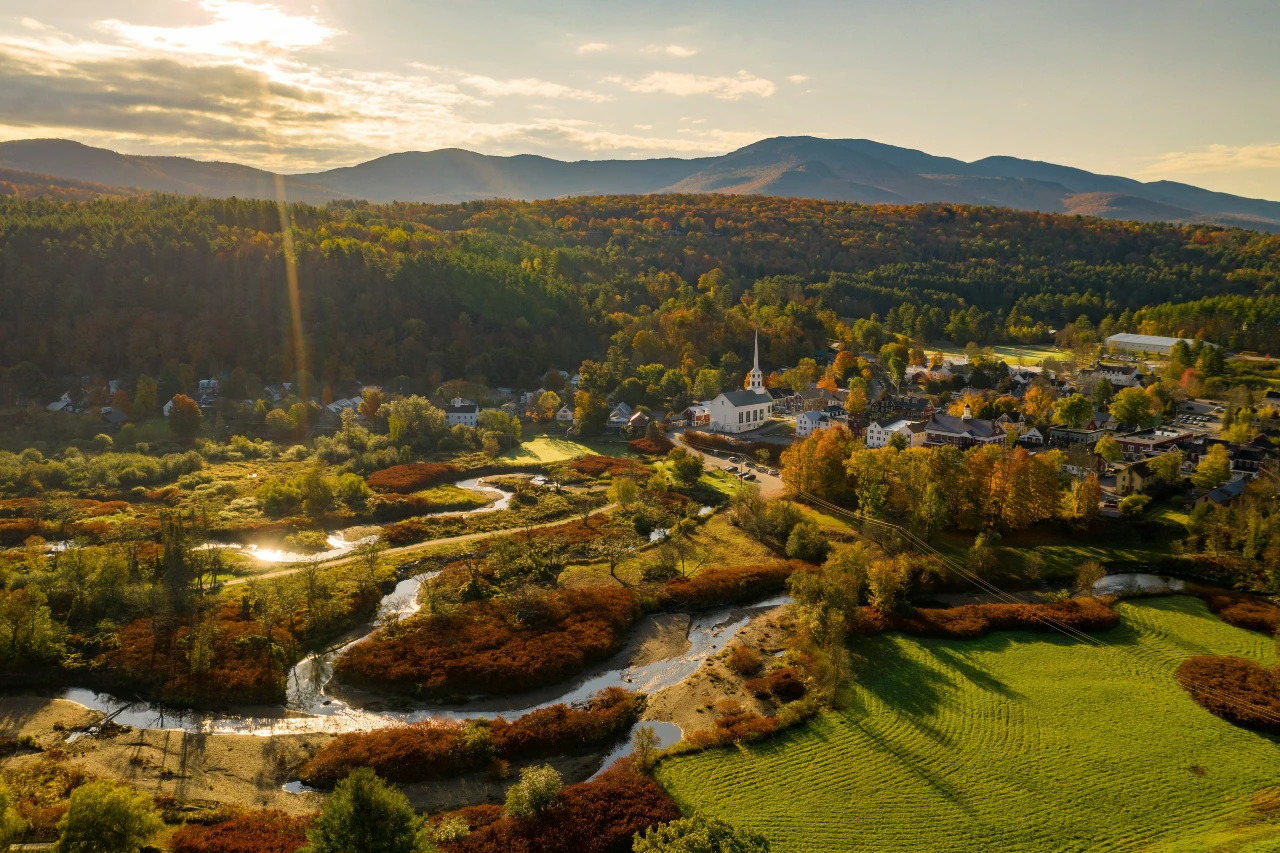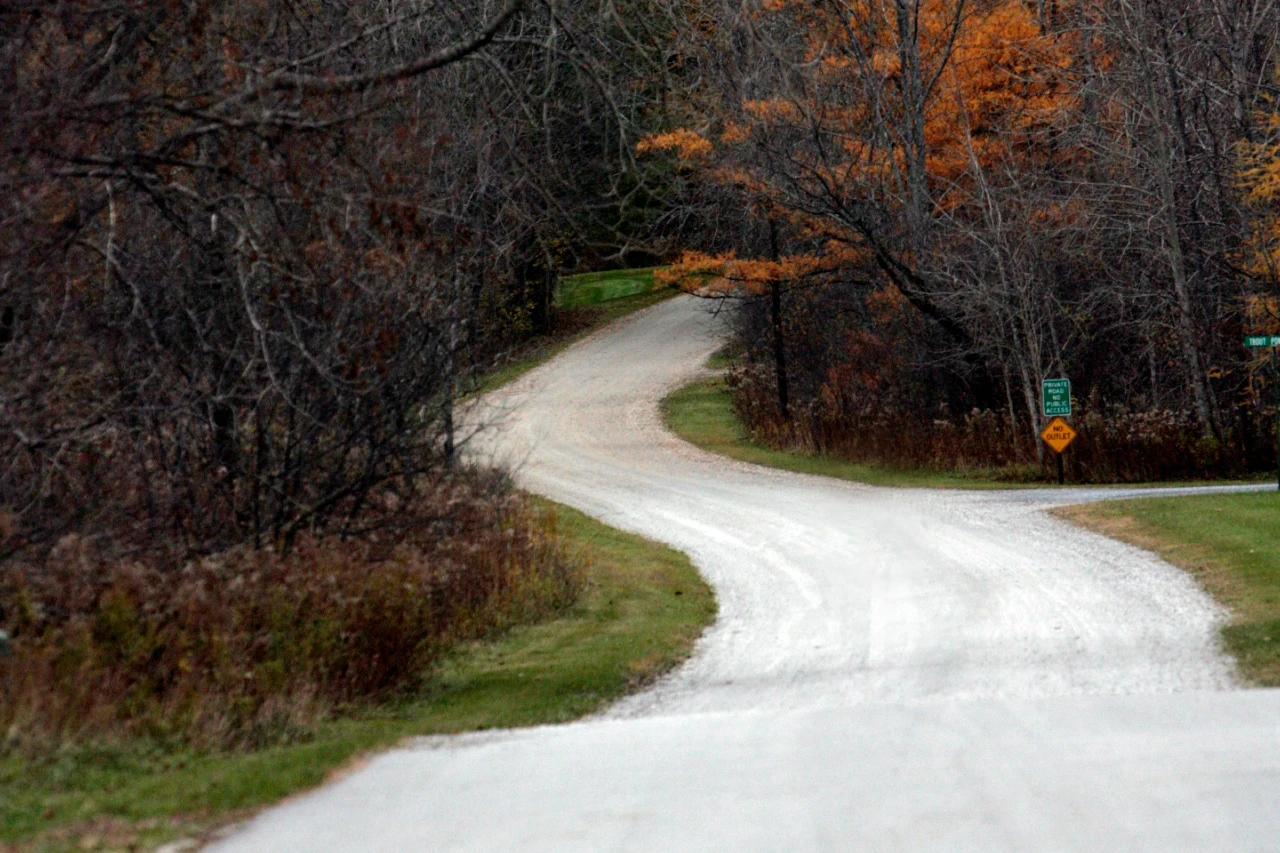Vermont's combination of world-class ski resorts, picturesque fall foliage, and charming rural character creates exceptional opportunities for short-term rental investors. The Green Mountain State attracts over 13 million visitors annually, generating sustained demand for vacation rentals across multiple seasons. Whether guests are booking through Airbnb, VRBO or direct, Vermont's tourism-driven economy supports strong occupancy rates for well-positioned properties.
Vermont's appeal extends beyond just winter skiing. Summer brings hikers and outdoor enthusiasts, fall attracts leaf-peepers willing to pay premium rates for mountain views, and spring draws visitors seeking rural escapes and farm-to-table experiences. Understanding Airbnb and short-term rental laws in Vermont is crucial before purchasing, as municipalities enforce different registration requirements and meal tax obligations. While Vermont's regulatory environment remains more permissive than neighboring states, compliance with local rules protects your investment and prevents costly violations.
Before investing, securing short-term rental insurance in Vermont is essential. Standard homeowners policies exclude coverage for rental activities, leaving significant gaps in protection against property damage and liability claims.
1. Stowe: Vermont's premier ski destination with year-round appeal

Stowe represents Vermont's most established and lucrative short-term rental market, combining world-class skiing at Stowe Mountain Resort with a charming village atmosphere that attracts affluent travelers year-round. This Lamoille County town has built an international reputation as New England's premier ski destination, creating reliable demand that supports some of Vermont's highest vacation rental rates.
Market performance and seasonal dynamics
Stowe properties command exceptional rates during peak ski season, with condos near the mountain generating $300-$700 nightly and luxury homes exceeding $1,000 during holiday weeks. The town's infrastructure—including the Stowe Mountain Lodge and numerous high-end restaurants—supports a premium pricing environment where visitors expect quality accommodations and are willing to pay accordingly. Winter occupancy rates typically exceed 80% for well-marketed properties with ski access or convenient shuttle connections.
Unlike single-season ski towns, Stowe maintains strong demand during summer months when hikers tackle Mount Mansfield, cyclists ride the Stowe Recreation Path, and families explore the area's outdoor activities. Fall brings exceptional pricing opportunities as leaf-peepers flood the region seeking Vermont's famous foliage—properties with mountain views can command rates rivaling or exceeding winter peaks during the brief but intense foliage season in late September and early October. Even spring mud season, traditionally the slowest period, sees moderate bookings from visitors seeking quiet retreats and early-season hiking.
Investment considerations and entry costs
Stowe's premium market position comes with correspondingly high acquisition costs. Condos near the mountain start around $400,000, while single-family homes in desirable locations typically range from $600,000 to several million dollars. These entry costs require significant capital, but the town's established tourism infrastructure and consistent demand provide downside protection that emerging markets can't match. You're buying into a proven market with decades of vacation rental history rather than speculating on an unproven destination.
Vermont's rental property costs in Stowe include higher property taxes compared to rural areas, substantial heating expenses during long winters, and insurance premiums that reflect the property values and weather risks. Professional property management typically runs 25-30% of rental revenue in Stowe, as the competitive market demands responsive service, professional cleaning, and active revenue management to maximize returns. Factor these operating expenses carefully when underwriting deals—gross rental income looks attractive, but net cash flow after all costs determines actual investment viability.
Regulatory environment
Stowe requires short-term rental operators to register with the town and collect Vermont's 9% meals and rooms tax on all bookings. The registration process is straightforward compared to restrictive resort towns in other states, but compliance is essential—Vermont has increased enforcement in recent years, and operating without proper registration risks penalties and back-tax assessments. Understanding Vermont's property management laws becomes particularly important if you're hiring professional managers, as you'll need clear agreements defining responsibilities for tax collection, guest communication, and property maintenance.
The town's zoning regulations allow short-term rentals in most areas without special permits, though some neighborhood associations and Vermont HOA regulations may restrict rentals in specific condo developments. Always verify a property's rental eligibility before purchasing—discovering rental restrictions after closing can eliminate your entire investment thesis and leave you with an expensive second home rather than an income-producing asset.
2. Killington: high-volume ski market with strong rental yields

Killington offers a compelling alternative to Stowe's premium market, combining Vermont's largest ski resort with more accessible entry costs and year-round activity. Known as the "Beast of the East," Killington's extensive terrain and long season create consistent demand from both serious skiers and casual winter visitors seeking affordable Vermont ski vacations.
Why Killington works for investors
Killington's sheer size—over 3,000 acres of skiable terrain across seven mountains—generates visitor volume that supports a large vacation rental inventory without oversaturation. The resort attracts roughly 700,000 skier visits annually, creating sustained demand for apartments, condos, and homes within reasonable proximity to the mountain. Unlike boutique resorts where limited visitor capacity constrains rental potential, Killington's scale allows more investors to participate successfully.
Properties near Killington Access Road command $200-$500 nightly during peak winter weekends, with larger homes sleeping 10-12 people reaching $800-$1,200 when booked by groups splitting costs. The resort's early opening (often by October) and late closing (sometimes into June) extends the prime rental season compared to smaller Vermont ski areas, providing additional revenue weeks that improve annual returns. This long season helps offset mud season vacancy and generates more total rental nights than resorts operating just three to four months.
Summer business has grown substantially as Killington has invested in mountain biking, hiking trails, and adventure activities designed to attract warm-weather visitors. While summer rates run 40-50% below winter peaks, maintaining 50-60% summer occupancy significantly improves annual cash flow compared to properties sitting vacant half the year. The nearby towns of Woodstock and Quechee provide additional attractions that keep visitors in the area beyond just resort activities.
Entry costs and investment metrics
Killington's real estate market offers notably better value than Stowe or other premium Vermont destinations. Condos near the resort start around $200,000-$300,000, making Killington accessible to first-time vacation rental investors who can't afford Stowe's minimum entry points. Townhouses and single-family homes range from $350,000-$700,000 depending on location, size, and condition—still substantial investments, but manageable for investors with moderate capital.
These lower acquisition costs create better cash-on-cash returns despite slightly lower nightly rates than Stowe. When you're investing $250,000 instead of $500,000, generating $30,000-$40,000 in annual net operating income produces double-digit returns that justify the investment even after accounting for Vermont's operating costs. The math simply works better when your capital base is smaller, even if your absolute dollar profits are lower than more expensive markets.
Property management costs in Killington typically run 20-25% of revenue, slightly below Stowe's rates due to lower property values and less luxury-focused expectations. Self-management is more feasible in Killington if you're within driving distance and have the time to handle turnovers, though professional management still makes sense for out-of-state investors or those with full-time jobs.
Challenges and considerations
Killington's larger inventory means more competition for bookings, requiring strong marketing, competitive pricing, and excellent guest reviews to maintain occupancy. Properties that aren't updated, cleaned meticulously, or priced appropriately will struggle to attract bookings when guests have hundreds of alternatives within the same area. Success requires treating your rental as a business rather than assuming bookings will materialize simply because you're near a popular resort.
The area's less upscale character compared to Stowe means slightly lower average guest spending and expectations for luxury amenities. You're attracting budget-conscious families and younger groups rather than affluent travelers seeking premium experiences, which affects both pricing power and wear-and-tear on properties. Plan for higher maintenance costs and more frequent updates to keep properties competitive in this volume-driven market.
3. Manchester: upscale village with shopping and outdoor recreation

Manchester offers a different investment proposition than pure ski resort markets, combining year-round attractions with New England village charm that appeals to diverse visitor demographics. This Bennington County town attracts shoppers visiting designer outlets, outdoor enthusiasts exploring nearby mountains, and couples seeking romantic getaways in historic inns and vacation rentals.
Diversified demand streams
Manchester's greatest advantage is demand diversification that reduces seasonal volatility. Shopping tourism brings visitors year-round to browse Manchester Designer Outlets and local boutiques, creating baseline demand that persists even during traditional shoulder seasons. Hildene (Robert Todd Lincoln's estate), the American Museum of Fly Fishing, and numerous art galleries provide cultural attractions that appeal to visitors who aren't primarily focused on outdoor activities.
Summer brings hikers and mountain bikers to nearby trails, while fall foliage season generates exceptional demand from leaf-peepers willing to pay premium rates for well-positioned properties. Winter attracts skiers visiting Stratton Mountain and Bromley Mountain, both within easy drives from Manchester. This multi-season appeal means Manchester vacation rentals can maintain 60-70% annual occupancy rather than experiencing the dramatic seasonal swings common in single-purpose resort towns.
Properties in Manchester Village—the historic downtown area—command $200-$400 nightly depending on size and amenities, with luxury homes exceeding $600 during peak periods. The area's upscale character supports premium pricing for well-appointed properties, while the town's walkability allows guests to explore restaurants, shops, and galleries without driving, enhancing the vacation experience and generating positive reviews.
Investment economics
Manchester's real estate prices fall between Stowe's premium levels and Killington's more accessible entry points. Condos and smaller homes start around $300,000-$400,000, while larger properties in prime locations range from $500,000 to well over $1 million for historic estates. The market attracts both vacation rental investors and second-home buyers seeking personal use with rental income, creating price support even during economic downturns when pure investment buyers might retreat.
Operating costs in Manchester include property taxes that reflect the area's desirability, heating expenses during cold months, and property management fees if you hire professionals. The town's year-round activity makes self-management more feasible than in remote resort areas where you'd need to drive hours for turnovers, though distance and time availability still determine whether self-management makes practical sense.
Regulatory and competition factors
Manchester requires short-term rental registration and meals and rooms tax collection like other Vermont municipalities. The process is straightforward, but staying compliant with tax obligations and maintaining proper records is essential. Some historic district regulations may affect exterior modifications or signage, though interior renovations generally face fewer restrictions than in more heavily regulated towns.
Competition comes from both vacation rentals and the area's numerous bed and breakfasts and boutique inns that offer similar charm with included breakfasts and innkeeper service. Differentiating your property through superior amenities, modern updates, or unique character becomes crucial for attracting bookings in this competitive environment. Properties that simply offer generic accommodations will struggle against established lodging options that provide more personalized experiences.
4. Burlington and Lake Champlain Islands: waterfront vacation market

Burlington and the Lake Champlain Islands represent Vermont's premier waterfront vacation rental market, offering completely different attractions than mountain resort areas. Vermont's largest city provides urban amenities and cultural attractions, while the nearby islands deliver secluded waterfront experiences that appeal to families seeking classic summer lake vacations.
Summer-focused investment model
Unlike ski-centric markets where winter drives economics, Lake Champlain properties generate their highest revenue during summer months when visitors flock to beaches, marinas, and water activities. Waterfront homes and cottages on the islands command $300-$800 nightly during July and August, with premium properties featuring private beaches or boat docks reaching $1,000+ for weekly bookings. The lake's clean water, stunning mountain views, and numerous islands create a vacation atmosphere that rivals more famous summer destinations at more accessible price points.
Burlington itself attracts visitors year-round to the Church Street Marketplace, waterfront restaurants, and University of Vermont events, providing more consistent demand than purely seasonal lake properties. Apartments and condos in Burlington's downtown or Old North End neighborhoods serve business travelers, university visitors, and tourists exploring Vermont's cultural capital. This urban vacation rental market operates more like city short-term rentals than traditional resort properties, with shorter booking windows and more diverse guest types.
Fall brings another revenue peak as foliage viewers seek lakefront perspectives on Vermont's famous autumn colors. Properties with western exposures capturing sunset views over the lake command premium rates during the brief but lucrative foliage season. Winter and spring represent challenging periods with significantly reduced demand, requiring investors to accept seasonal vacancy or pursue creative strategies like monthly rentals to University of Vermont affiliates or medical professionals on temporary assignments.
Investment considerations and challenges
Lake Champlain waterfront properties command premium acquisition costs reflecting their scarcity and appeal. Waterfront homes on South Hero, North Hero, or Grand Isle typically start around $500,000 and escalate quickly for properties with private beaches, deep-water docks, or exceptional views. Burlington condos and apartments offer more accessible entry points from $200,000-$400,000, though the best downtown locations near Church Street command higher prices.
The seasonal nature of lake tourism creates cash flow challenges that require careful financial planning. Strong summer revenue must cover not just summer operating costs but also carrying costs during long vacancy periods when properties generate little or no income. This seasonality makes Lake Champlain properties better suited for investors with adequate reserves to weather slow periods, or those who can use properties personally during off-season to extract value beyond just rental income.
Waterfront properties face higher insurance costs due to flood risk, wind exposure, and higher property values. Securing appropriate insurance that covers waterfront risks, dock liability, and seasonal vacancy becomes essential for protecting your investment. Standard policies may exclude certain water-related perils or impose coverage limitations that leave you exposed to significant losses if problems occur.
Market positioning and competition
Success in the Lake Champlain market requires understanding your specific guest demographic. Island properties attract families seeking traditional lake vacations with fishing, swimming, and boating—your marketing should emphasize outdoor amenities, water access, and family-friendly features. Burlington rentals serve urban tourists, university visitors, and business travelers—highlighting walkability, restaurants, and cultural attractions resonates better with this audience than emphasizing outdoor recreation.
Competition comes from established summer cottage rentals, campgrounds offering more affordable lake access, and hotels in Burlington serving business travelers. Differentiating your property through exceptional amenities, pristine waterfront access, or unique character becomes essential for attracting bookings and commanding rates that justify your investment costs.
5. Woodstock and Quechee: quintessential New England charm

Woodstock and nearby Quechee represent quintessential Vermont village charm, offering investors access to a market built on sophisticated travelers seeking authentic New England experiences. This Windsor County area attracts couples on romantic getaways, leaf-peepers during fall foliage season, and visitors exploring the region's covered bridges, farms, and artisan producers.
Year-round appeal with distinct seasonal peaks
Woodstock maintains remarkably consistent demand across three seasons, with only mud season (April-May) presenting significant challenges. Fall foliage brings the area's highest occupancy and rates, with properties commanding $250-$500 nightly as visitors flock to see Vermont's famous autumn colors framing the town's iconic village green and covered bridges. The Quechee Gorge—"Vermont's Little Grand Canyon"—becomes a major attraction point that drives additional traffic to the area.
Winter brings skiers visiting nearby Suicide Six and Killington, couples seeking cozy getaways in historic settings, and visitors exploring Vermont's winter landscapes. Summer attracts families visiting farms, hiking local trails, and enjoying outdoor activities without the crowds of more famous destinations. The Woodstock area's sophisticated character and numerous high-end restaurants support strong shoulder season demand from visitors seeking peaceful retreats during quieter periods.
Properties in Woodstock Village command premium rates reflecting the area's upscale character and limited inventory. Historic homes and renovated farmhouses generate $300-$600 nightly during peak periods, while more modest properties or those slightly outside town center run $200-$350. The area attracts affluent travelers with high expectations for property quality, cleanliness, and amenities—meeting these standards requires investment in updates and meticulous property management.
Investment economics and market dynamics
Woodstock's real estate market reflects the area's desirability and limited supply, with entry costs that challenge first-time investors. Properties suitable for vacation rentals typically start around $400,000-$500,000, with historic homes in prime locations exceeding $1 million. The area's strict development regulations and historic preservation requirements limit new construction, supporting property values but also constraining supply that would otherwise moderate prices.
The sophisticated guest demographic means higher revenue potential per booking but also elevated expectations that increase operating costs. Professional cleaning must be impeccable, maintenance issues require immediate attention, and amenities should reflect the premium rates you're charging. Property management fees in Woodstock typically run 25-30% of revenue, reflecting the service level required to maintain guest satisfaction and positive reviews in this quality-focused market.
Understanding Vermont's real estate market dynamics helps investors assess whether Woodstock's appreciation potential justifies the higher entry costs compared to more accessible markets. The area's limited supply and consistent demand provide strong fundamentals supporting long-term value, though year-to-year fluctuations can occur during economic downturns when discretionary travel spending contracts.
Regulatory environment and competition
Woodstock requires short-term rental registration and tax collection like other Vermont towns, but the process remains straightforward without the restrictive regulations found in some resort communities. Some properties may face historic district regulations affecting exterior modifications, though interior updates generally proceed without significant restrictions. Always verify any easements, covenants, or local regulations before purchasing—discovering limitations after closing can fundamentally alter your investment thesis.
Competition comes from the Woodstock Inn and numerous bed and breakfasts that offer similar charm with included amenities and personal service. Your vacation rental must differentiate through privacy, space, unique character, or amenities that hotels can't match—full kitchens for families, private outdoor spaces, pet-friendly policies, or distinctive historic features that create memorable experiences. Generic properties without clear differentiation struggle to maintain occupancy in this competitive environment.
Understanding Vermont's short-term rental insurance requirements
Protecting your Vermont vacation rental requires specialized coverage that addresses the unique risks of transient occupancy in a state with harsh winters, older housing stock, and significant seasonal weather variations. Standard homeowners insurance explicitly excludes coverage when properties are rented, creating dangerous gaps that could eliminate years of profits from a single incident.
Comprehensive short-term rental insurance in Vermont must cover property damage from guests beyond what security deposits can address, liability protection for injuries occurring during guest stays, loss of rental income when damage prevents bookings, and the specific weather-related risks common in Vermont properties. Winter heating system failures, ice dam damage, frozen pipes, and snow load on roofs represent significant risks that standard policies may exclude or limit without proper endorsements.
Vermont's liability environment makes adequate coverage essential. If a guest slips on ice, gets injured on a ski trail accessed from your property, or experiences carbon monoxide issues from your heating system, you could face substantial claims that exceed basic policy limits. Ensuring your coverage adequately protects your assets and future earning capacity isn't optional—it's a fundamental business requirement for operating vacation rentals responsibly.
Vermont's regulatory landscape and the short-term rental loophole
Vermont imposes meals and rooms tax on short-term rentals under 30 days, requiring operators to register with the Vermont Department of Taxes and remit 9% tax on all bookings. While platforms like Airbnb and VRBO collect and remit this tax for many bookings, operators remain ultimately responsible for compliance regardless of platform collection. Understanding Vermont's short-term rental laws prevents costly violations and ensures you're operating legally.
Individual municipalities may impose additional registration requirements, occupancy limits, or safety standards beyond state-level regulations. Most Vermont towns maintain relatively permissive approaches compared to resort communities in other states, but regulations vary significantly by location. Some towns require no local registration beyond state tax compliance, while others mandate inspections, neighbor notifications, or parking standards.
The "short-term rental loophole" regarding 30+ day bookings applies differently in Vermont than in states with restrictive rental regulations. Since Vermont doesn't impose severe restrictions on short-term rentals in most markets, the primary benefit of longer stays relates to tax treatment and reduced turnover costs rather than regulatory avoidance. Bookings of 30 days or longer generally aren't subject to meals and rooms tax, and they dramatically reduce cleaning and management expenses compared to frequent turnovers.
Vermont real estate market trends and investment outlook
Vermont's real estate market has experienced significant appreciation in recent years, driven partly by remote workers relocating from urban areas and seeking lifestyle improvements. This migration has increased competition for properties in desirable vacation rental markets, pushing prices higher and compressing initial yields compared to historical norms. Investors should underwrite conservative appreciation assumptions rather than assuming recent price growth will continue indefinitely.
Climate considerations add complexity to long-term projections. Shorter or less reliable ski seasons due to warming temperatures could impact winter-dependent markets like Stowe and Killington, though snowmaking investments help mitigate this risk. Conversely, milder summers might extend the prime tourism season and reduce winter heating costs, creating offsetting benefits. Factor these environmental trends into your investment horizon and exit strategy.
Vermont's population remains relatively stable with modest growth, meaning vacation rental demand depends primarily on out-of-state visitors rather than local population expansion. This external demand makes Vermont markets more vulnerable to economic downturns that reduce discretionary travel spending, though the state's proximity to major East Coast population centers provides some insulation compared to more remote destinations.
Read more: Top 5 short-term rental markets in Colorado
Getting started with Vermont vacation rental investing
First-time Vermont investors should prioritize markets matching their capital availability and risk tolerance. Killington offers the most accessible entry points for investors with limited capital, while Stowe and Woodstock suit those with larger budgets seeking premium markets with established demand. Lake Champlain properties work best for investors who can handle seasonal cash flow fluctuations or who want personal use during slow periods.
Start by analyzing comparable properties on Airbnb and VRBO in your target market, reviewing nightly rates, occupancy patterns, and guest reviews to understand realistic performance expectations. Build conservative financial projections accounting for 50-60% annual occupancy initially, Vermont's high heating costs, property management fees if applicable, and adequate reserves for maintenance and capital improvements. Vermont's older housing stock often requires more maintenance spending than newer properties in Sun Belt markets.
Secure appropriate short-term rental insurance in Vermont before your first booking, ensure compliance with state tax registration and any local requirements, and develop relationships with local property managers, contractors, and cleaning services. Vermont's small-town character means reputation matters tremendously—building good relationships with neighbors, service providers, and local officials creates smoother operations and helps resolve issues before they escalate into serious problems.
Vermont's combination of natural beauty, four-season appeal, and proximity to major East Coast markets creates solid fundamentals for vacation rental investing despite higher entry costs and operating expenses than some competing states. With proper market selection, realistic financial expectations, and professional management, Vermont short-term rentals can generate attractive returns while providing personal use opportunities in one of America's most beautiful states.






.png)
.jpg)
.jpg)


.png)